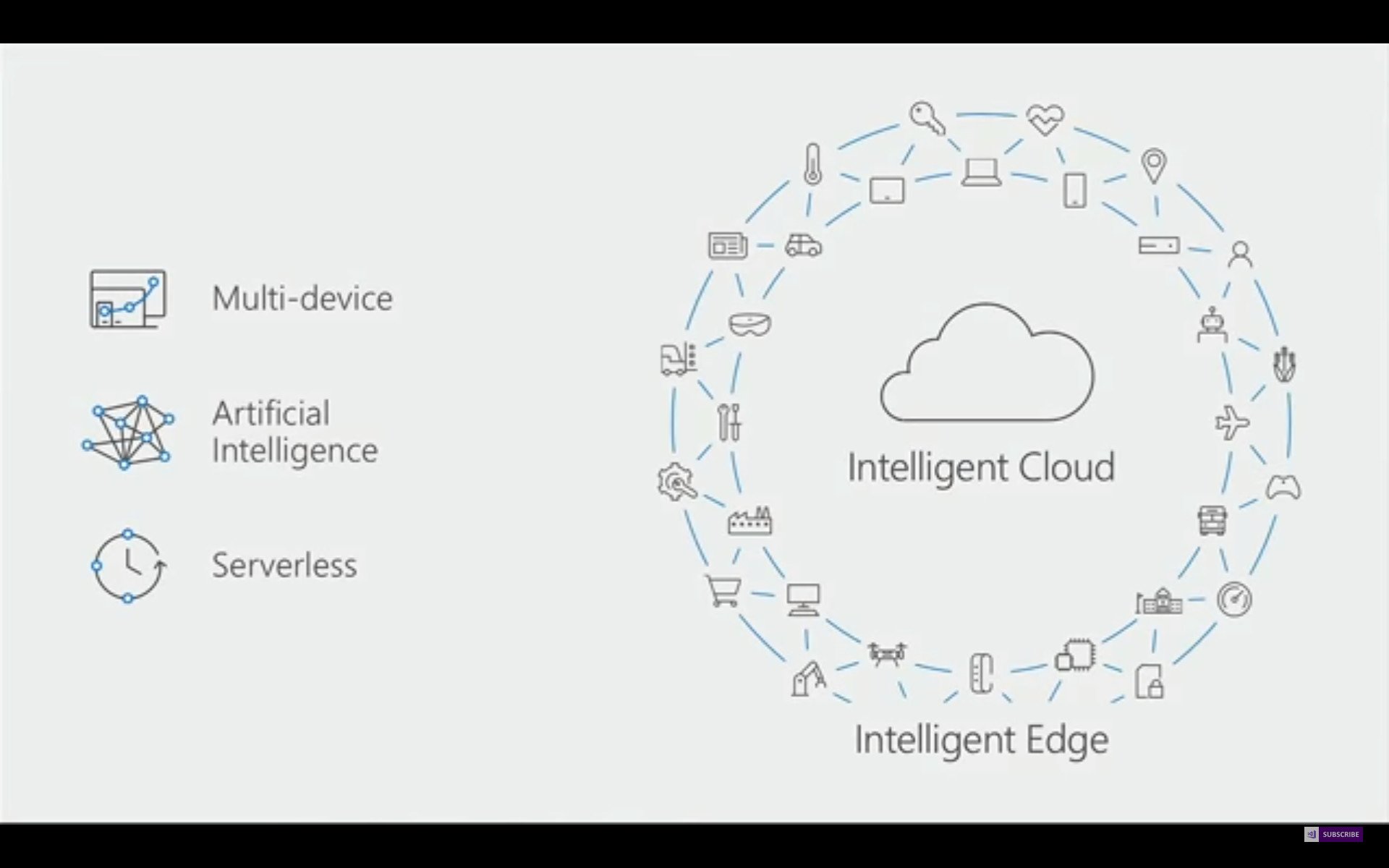What is Microsoft’s intelligent edge and how does it affect mobile?
Source – windowscentral.com
Microsoft’s growing investments in cloud computing and a recent reorg reflecting those investments are sure to bring greater attention to Microsoft’s intelligent edge and mobile strategy.
To understand the intelligent edge, however, we must have a basic grasp of the intelligent cloud and the Internet of Things (IoT).
Heads in the cloud
Cloud computing is using a network of remote servers hosted on the Internet, rather than a local server or personal computer, to store, manage, and process data. Simply put the Internet, or cloud has enabled computing that is no longer limited to a local hard drive but allows access to data and services that exist on other internet-connected devices.

Microsoft’s OneDrive, OneNote, the online versions of Office, Google’s productivity suite, Apple’s iCloud and DropBox are examples of cloud-based products and services.
From a business perspective cloud offerings include Infrastructure-as-a-Service (IaaS), Platform-as-a-Service (PaaS) and Software-as-a-Service (SaaS).
- IaaS companies rent IT infrastructure such as servers, operating systems or networks on a pay-as-you-go basis, from a cloud provider like Microsoft.
- PaaS is ideal for web or mobile app developers who need an on-demand environment to develop, test, deliver and manage their software. The cloud provider manages the underlying infrastructure.
- SaaS is a means of providing software on-demand, over the Internet and is usually subscription based. The cloud provider manages upgrades, security and the underlying infrastructure. Users use Internet-connected devices like smartphones, PCs or tablets to access this software.
In conjunction with the cloud, the IoT is important to understanding edge computing. IoT is the interconnected array of computing devices, objects, and machines with unique identifiers that are capable of transferring data over a network without human-to-human or human-to-computer interaction. These devices include wearables, connected cars, smart home appliances and more. As devices which are closest to the user, they exist at the cloud’s edge.
What is the Intelligent Edge?
The intelligent edge is the process where data is analyzed and aggregated at a point close to where it is captured in a network.
Sam George of Microsoft’s Azure IoT Team demonstrated (in video above) how logic for analysis of factory equipment that usually occurs in the cloud could be moved to a connected device onsite, on the cloud’s edge.
This IoT Edge solution reduced latency associated with the transfer of data between the cloud and device.
During an April 2017, investors call Nadella shared his edge computing vision and alluded to its even more profound applications.
Everyone’s talking about the cloud; the most interesting part is the edge of the cloud. Whether it’s IoT… auto industry… retail, essentially compute is going where the data gets generated… which is the edge.
[A] lot of what we have done with IoT is create an IoT edge… the ability to run a neural network at the edge, doing inferences at the edge is exciting.
Nadella said companies will eventually modernize their workloads by utilizing Microsoft’s intelligent edge. He admits this is a long view that will endure a lot of market volatility as the industry transitions to increased edge computing:
It will also be modernized to live on the edge of the cloud. That’s a multiyear and a generational transformation. Quarter to quarter, there will be all kinds of volatility. But… we have a very clear worldview of what is it that we want to get done.
Data, computational power and AI on the edge

Nadella stated at Build 2017: “We’re moving from what is today’s mobile-first, cloud-first world to a new world that is going to be made of an intelligent cloud and an intelligent edge.” A user’s experiences are being distributed across all devices. Within this context the multi-device experience now needs platform capabilities, he explained.
As more devices permeate our environment and become increasingly connected, more data is being generated at that clouds edge. Nadella gave an example of connected cars generating hundreds of gigabytes of data.
This amassing of data draws computational power to the edge enabling AI to process information and inferences to be made that were previously relegated to the cloud. Thus, an intelligent edge.
Intelligent surveillance, watching from the edge
Whereas George’s demo showed the lower extreme of the intelligent edge, Microsoft’s AI-driven surveillance tech demonstrates the higher extreme.
Using standard cameras such as those already in workplaces, hospitals, schools and communities Microsoft’s AI enhanced surveillance solution can recognize people, places, things, actions and environmental conditions. In an initial deployment as a safety measure in workplaces and hospitals, it can also act proactively to convey information to appropriate personnel based on what it “sees.”